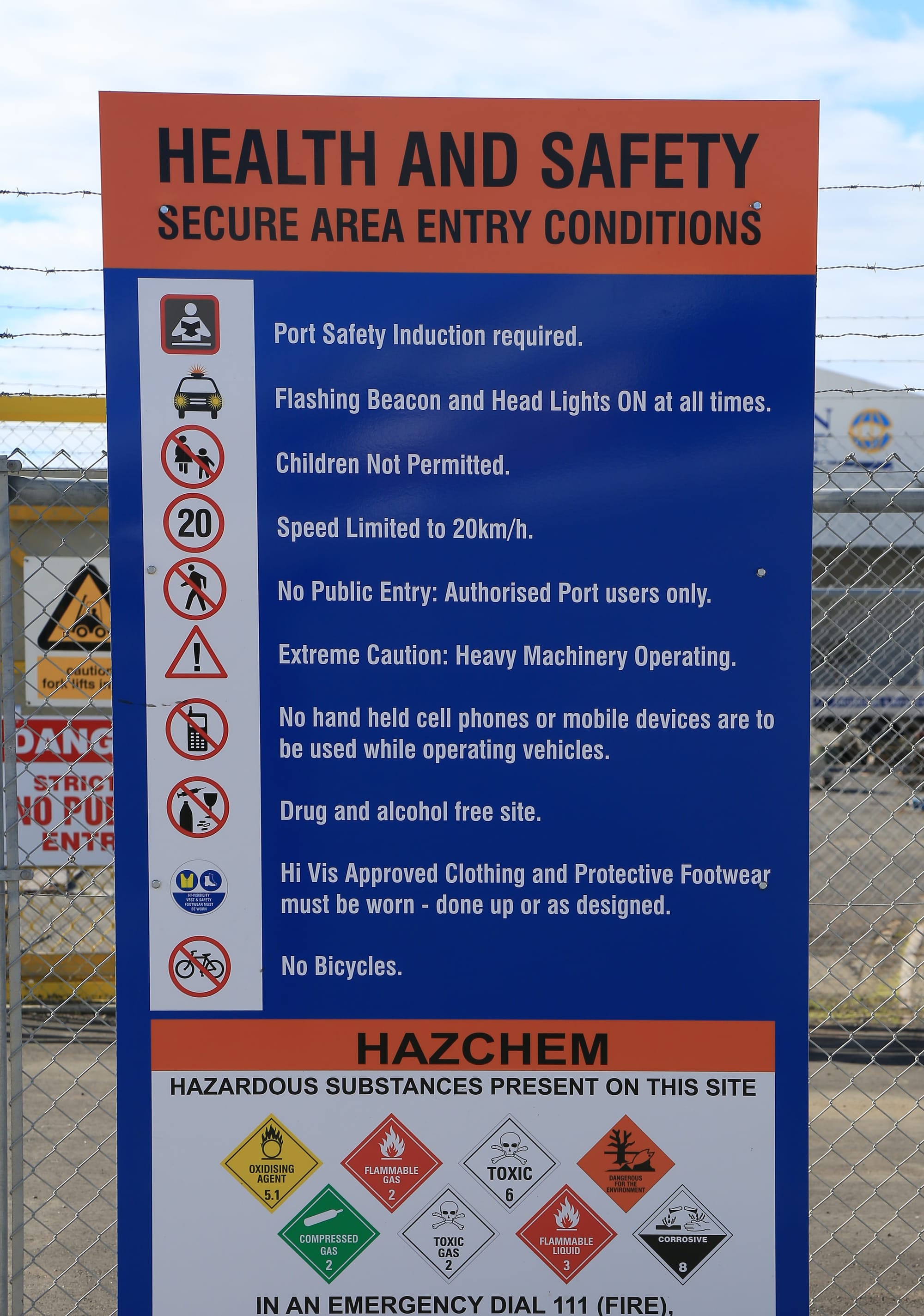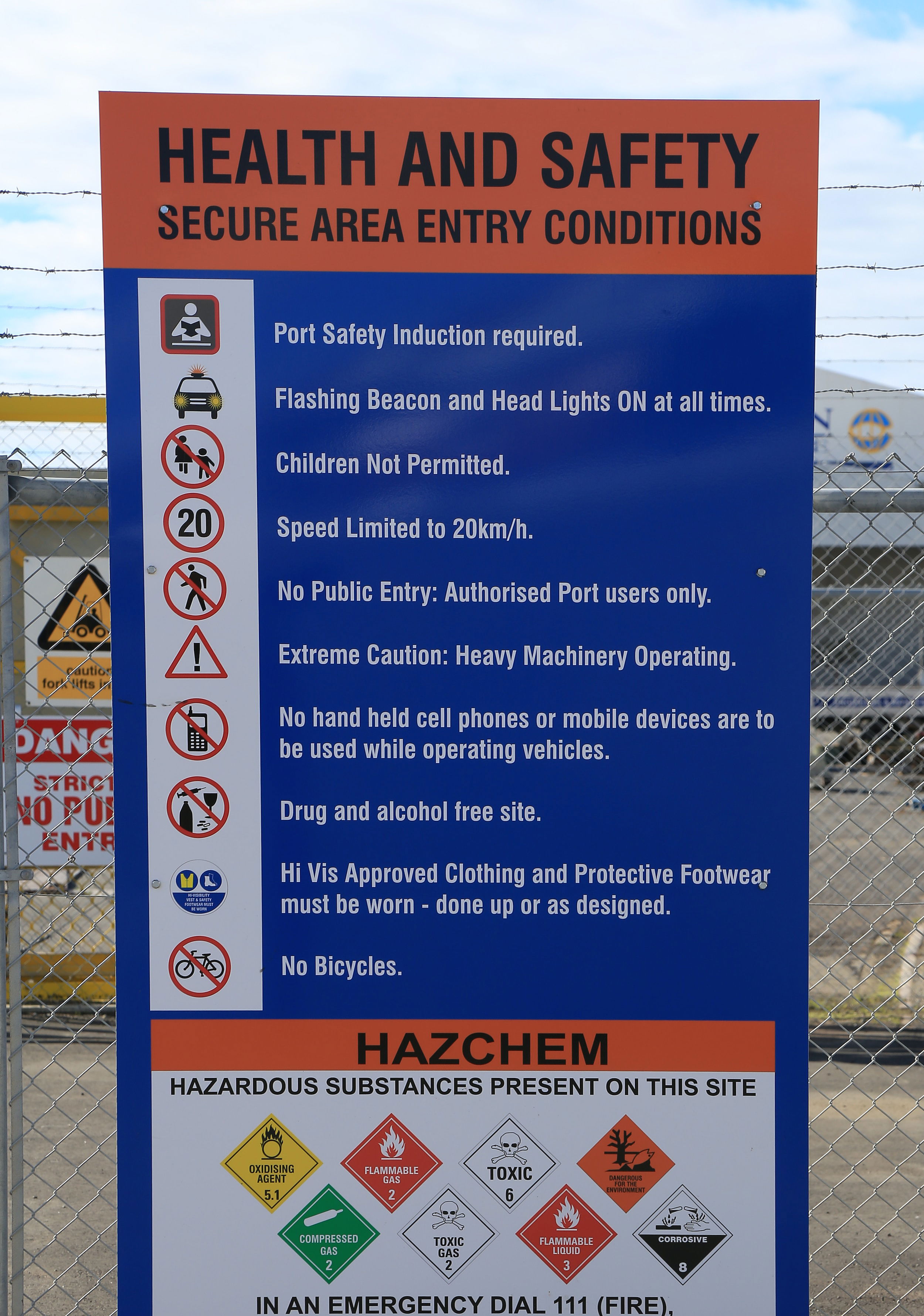The Essential Guide to Safety Data Sheets (SDS) for Painters

Guide to Safety Data Sheets (SDS) for Painters
Safety Data Sheets
Welcome to the world of safe painting! In this comprehensive guide, we delve into the crucial role that Safety Data Sheets (SDS) play in ensuring the safety of painting professionals and DIY enthusiasts alike. Understanding these documents is key to the safe handling of chemical products used in various painting projects. From identifying potential hazards to learning proper storage and handling techniques, SDS offer invaluable guidance for anyone embarking on a painting project.
"Why did the painter always carry a first aid kit? Because he knew it's better to have it and not need it than to need it and not have it! It's like when I carry snacks in my bag – not essential, but crucial for my survival when a wild hunger pang appears out of nowhere!"
The Role of SDS in Painting
Safety Data Sheets are not just bureaucratic formalities; they are essential tools that provide critical information about paint composition, potential hazards, safe handling, storage instructions, protective measures, and first aid treatments. They serve as an extensive resource, helping painters to understand the properties of the materials they work with and how to handle them responsibly.
Safety and Responsibility Through Knowledge
The essence of Safety Data Sheets (SDS) lies in their ability to impart crucial knowledge that paves the way for both safety and responsibility in the realm of painting. Here's a more in-depth look at each aspect covered by SDS:
- Paint Composition:
- Chemical Makeup Awareness: Understanding the chemical composition of paints is critical. This knowledge aids in identifying potentially hazardous components such as lead in older paints or volatile organic compounds (VOCs) in certain modern formulations.
- Informed Selection: With an understanding of paint composition, painters and DIY enthusiasts can make informed choices, opting for less hazardous options or taking necessary precautions when using more potent varieties.
- Potential Hazards:
- Risk Identification: Different types of paint present different risks. For instance, oil-based paints are more flammable compared to water-based paints. SDS provide information on these risks, enabling users to be aware and prepared.
- Hazard Communication: SDS ensure that all individuals involved are fully aware of the potential dangers, thereby fostering a culture of safety and mindfulness.
- Safe Handling and Storage:
- Handling Procedures: SDS provide instructions on how to handle paints to avoid accidents, such as avoiding direct skin contact or inhalation of fumes.
- Storage Recommendations: Proper storage is crucial in preventing incidents like fires or chemical reactions. SDS guidelines include advice on suitable storage conditions, like temperature controls and ventilation requirements.
- Protective Measures:
- Personal Protective Equipment (PPE): Based on the risks identified, SDS recommend specific protective gear. This might include gloves to prevent skin contact, goggles for eye protection, and respirators to avoid inhaling toxic fumes.
- Creating a Safe Workspace: Beyond personal gear, SDS also advise on ventilating the workspace properly or using appropriate filters and exhaust systems to maintain a safe environment.
- First Aid Treatments:
- Immediate Responses: In case of accidental exposure, SDS provide essential first aid measures. This could include flushing the skin or eyes with water in case of splashes or seeking immediate medical attention for more severe exposures.
- Emergency Preparedness: Having this information readily available ensures a quick and effective response to accidents, minimizing the risk of serious health consequences.
In sum, Safety Data Sheets are indispensable tools in the painting industry, offering a wealth of information essential for the safe handling of painting materials. They educate users on the intricacies of paint composition and the associated risks, guide the proper handling and storage of these materials, recommend necessary protective measures, and provide critical first aid procedures. This comprehensive knowledge base is pivotal in fostering a safety-first approach among both professionals and hobbyists in the painting world.
By diligently adhering to the guidelines provided in SDS, individuals involved in painting projects can significantly reduce the risks associated with paint and related materials, ensuring not only their own safety but also the safety of those around them and the environment. This responsible approach to painting is integral to maintaining high standards of health, safety, and environmental stewardship in the industry.
Composition and Hazard Identification in SDS
The first section of an SDS is not just a list of ingredients; it's a map to navigating the safe use of paint products. By providing a clear understanding of what’s in the paint, it empowers users to take informed actions to mitigate risks, comply with safety regulations, and protect both human health and the environment. This foundational knowledge is indispensable for anyone involved in the handling, application, or management of paint products.
"Safe painting practices in the world of home improvement are like the guardrails on a mountain road. They might not seem glamorous, but they guide you safely through the most challenging paths, ensuring you can enjoy the journey without fear. It's like when I was learning to ride a bike as a kid; those training wheels were my safety net, allowing me to pedal towards adventure with confidence."
Navigating Chemical Components in Painting
Understanding the chemical makeup of paints is not just a matter of professional expertise but a crucial step in ensuring safety during painting projects. Here’s an expanded view of how knowledge of chemical components in paints plays a vital role in managing risks and choosing protective gear.
- Understanding Risks:
- Chemical Hazards Identification: Different chemicals present in paints pose varied risks. For example, solvents in some paints may release harmful fumes, while certain pigments could be toxic if ingested or inhaled. Knowing these components helps in identifying specific hazards like flammability, toxicity, reactivity, and environmental impact.
- Risk Assessment: With an understanding of the chemical components, painters can assess the level of risk involved in using certain paints. This assessment involves considering factors like concentration of hazardous chemicals, potential for exposure, and duration of exposure during the painting process.
- Safe Usage Practices: Knowledge of chemical risks guides painters in adopting safe usage practices. For instance, understanding the volatility of certain solvents can lead to implementing better ventilation or using less hazardous alternatives.
- Choosing Protective Gear:
- Selection of Personal Protective Equipment (PPE): Based on the chemical components and their risks, painters can determine the appropriate safety gear. This includes respirators for preventing inhalation of harmful fumes, gloves for skin protection, goggles for eye safety, and even protective clothing to guard against skin contact.
- Tailoring PPE to Chemical Exposure: Different painting scenarios require different levels of protection. For example, spraying paint with high VOC content might require a more robust respirator compared to using a low-VOC paint in a well-ventilated area.
- Maintenance and Proper Use of PPE: Understanding the risks also encompasses knowledge about the correct usage, maintenance, and limitations of PPE. For instance, certain types of respirator filters are only effective against specific chemicals and need regular replacement.
Navigating the chemical components in paints is a fundamental aspect of painting safely. It involves a thorough understanding of the potential risks associated with various chemicals and using this knowledge to choose and correctly use the appropriate protective gear. By doing so, painters can mitigate health hazards, ensuring both their safety and the safety of those in the surrounding environment.
This approach is not just about compliance with safety regulations but also about adopting a responsible and informed attitude towards the use of potentially hazardous materials in the painting industry. This level of diligence and awareness is key to maintaining safe work practices, reducing the likelihood of accidents, and promoting a culture of safety within the painting community.
Whether you're a professional painter or a DIY enthusiast, understanding and respecting the chemical nature of paints is an essential part of any painting project. It empowers you to make informed decisions, choose the right protective equipment, and handle painting materials with the utmost care and responsibility.
Safe Handling and Storage Instructions
An SDS provides detailed guidelines on correctly handling and storing painting products to maintain a safe work environment. These instructions are key to preventing accidents and ensuring the safety of everyone involved in the painting process.
In-Depth Understanding of SDS Guidelines for Safe Handling and Storage
The Safety Data Sheets (SDS) serve as an essential manual for the proper management of painting materials. They provide comprehensive and detailed guidelines on how to handle and store these products, thereby playing a pivotal role in maintaining a safe work environment.
- Detailed Handling Procedures:
- Specific Instructions: SDS outline specific instructions on how to handle different painting products, considering their unique properties. For example, some paints may require shaking or stirring before use, while others might need to be kept away from certain materials or temperatures.
- Minimizing Exposure: Guidelines on minimizing exposure to harmful chemicals are also provided. This can include advice on using products in well-ventilated areas or employing methods to reduce direct contact with skin or inhalation.
- Tool and Equipment Safety: Information on compatible tools and equipment for application, such as brushes, rollers, or sprayers, is also included, ensuring that they do not react negatively with the paint's chemical composition.
- Storage Guidelines:
- Appropriate Storage Conditions: SDS offer detailed information on the appropriate storage conditions for painting materials. This can involve temperature controls, avoiding direct sunlight, and proper ventilation.
- Segregation of Products: They also instruct on how to segregate incompatible materials – for instance, storing solvents away from oxidizing agents to prevent hazardous reactions.
- Preventing Leakage and Spillage: Guidelines on preventing leakage and spillage are crucial. This includes advice on using the correct type of containers, ensuring they are sealed properly, and placed securely to avoid accidental tipping or spillage.
- Preventing Accidents and Ensuring Safety:
- Risk Mitigation: By following the handling and storage instructions in the SDS, the risk of accidents, such as fires, chemical burns, or inhalation hazards, is significantly reduced.
- Safety of Personnel: The safety of everyone involved in the painting process, from the workers to the end-users, is enhanced. This includes not just direct safety from accidents but also long-term health safety from chronic exposure.
- Creating a Culture of Safety: Adherence to these guidelines helps in fostering a culture of safety in the workplace. It encourages responsibility and awareness among workers, making safety a priority in every task they undertake.
In essence, the guidelines provided in Safety Data Sheets are not just recommendations but are critical components of safe painting practices. They offer a blueprint for handling and storing painting products that, when followed, ensure the safety and well-being of everyone involved in the painting process.
This comprehensive approach to safety, backed by the detailed information in SDS, is instrumental in preventing workplace accidents, minimizing health risks, and ensuring that painting projects are executed with the highest safety standards in mind. By incorporating these guidelines into daily practices, painting professionals not only safeguard themselves but also contribute to creating a safer, more responsible painting industry.
Creating a Safe Workplace in Painting
The creation of a safe workplace, especially in the painting industry, is fundamental for the wellbeing of painters and those around them. Here’s an expanded explanation of how adherence to best practices and preventive measures, as guided by Safety Data Sheets (SDS), plays a crucial role.
- Following Best Practices:
- Adherence to Safety Protocols: The guidelines in SDS are developed by experts to minimize risks associated with painting materials. Following these protocols involves more than just reading the instructions; it requires a commitment to integrate these practices into daily work routines.
- Regular Training and Updates: Ensuring that all painting staff are regularly trained and updated on the latest safety protocols is key. This includes understanding new formulations in paints, changes in safety regulations, and advancements in safety gear.
- Workspace Safety Checks: A hazard-free workspace is maintained by conducting regular safety audits. These include checking ventilation systems, ensuring proper storage of paints and chemicals, and verifying that all safety equipment is in good working condition.
- Preventive Measures:
- Implementing SDS Instructions: Each paint and solvent comes with specific instructions for safe handling, storage, and disposal. Implementing these instructions is crucial for preventing spills, chemical reactions, and reducing the release of harmful vapors into the environment.
- Emergency Preparedness: A part of creating a safe workplace is being prepared for emergencies. This includes having spill containment measures in place, easily accessible first-aid kits, and clear procedures for handling accidents.
- Environmental Considerations: Safe painting isn’t just about immediate safety; it also involves considering the environmental impact. Using eco-friendly paints, proper disposal of waste, and minimizing the release of harmful substances are part of preventive measures that contribute to a safer ecosystem.
Creating a safe workplace in the painting industry is a multifaceted endeavor that goes beyond the individual painter. It involves a collective effort to adhere to best practices, regular training, and the implementation of preventive measures. By respecting the guidelines in SDS and being proactive in safety management, painters and companies can ensure not only a hazard-free workspace but also contribute to the larger goal of environmental conservation and public health safety. This proactive approach not only safeguards the painters but also reinforces a culture of safety and responsibility that is essential in the modern painting industry.
Conclusion: Embracing Safety in Painting
The significance of Safety Data Sheets in painting cannot be overstated. They are not just regulatory requirements but are fundamental to ensuring safety, quality, and environmental stewardship in the painting profession. By understanding and applying the knowledge from SDS, painters and DIY enthusiasts alike can undertake their projects with an assurance of safety and responsibility.
This guide aims to emphasize the importance of safety in all aspects of painting, encouraging readers to prioritize safe practices in their projects. Whether you're a professional painter or embarking on a DIY home improvement project, always remember: safety comes first.
Do You Have Questions? Give Us A Call With Any & All! 503-389-5758
Subscribe to Our Blog & Elevate Your DIY Game! Never miss a beat! Join the Lightmen Painting community and get the latest insights on painting, DIY projects, and expert tips delivered straight to your inbox.
Have something specific in mind? We’d love to hear your ideas! Let us know what topics or projects you’re curious about—your input shapes our next posts.
Subscribe now and let’s transform your spaces together!
"Embracing safe painting practices is like wearing a parachute when skydiving - it doesn't just protect you; it gives you the freedom to soar confidently. Remember, true bravery isn't in taking unnecessary risks, but in acknowledging and preparing for them. Just like when I first climbed a ladder to paint a ceiling – my trembling hands weren’t a sign of fear, but of respect for the heights I was about to conquer."
If your in the Portland, Or. area and need advice or a free no obligation estimate call us at 503-389-5758 or email scheduling@lightmenpainting.com
Shout Out
Shoreline Painting - Your Guide to Painting Excellence
The Shoreline Painting blog offers fantastic insights into both interior and exterior painting projects. We at Lightmen Painting appreciate their emphasis on the importance of using high-quality paints to achieve the best results. Whether you’re refreshing your home’s look or tackling a commercial space, their advice is invaluable. Learn more at Shoreline Painting.
Thanks for stopping by Lightmen Daily! Stay tuned for more practical tips and expert advice on making your painting projects flawless, from wall to floor!
Lightmen Painting Serving: Portland, Tigard, Lake Oswego, Tualatin, West Linn, Milwaukie, Sherwood, Happy Valley, Oregon City, Beaverton, Hillsboro, Gresham

